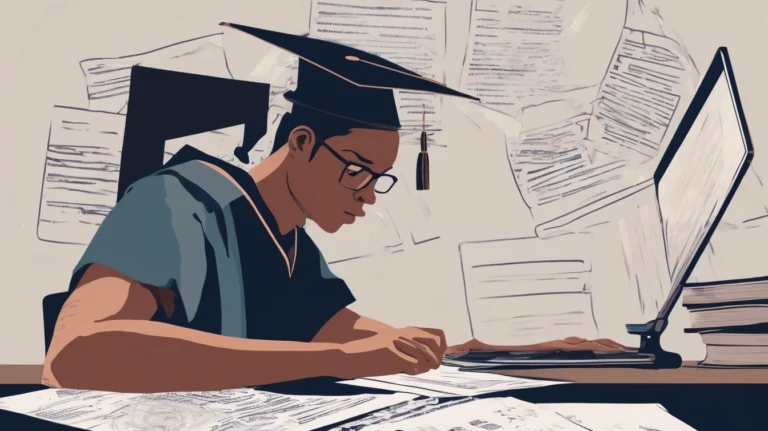
Why You Can’t Use ChatGPT For Assignments Anymore
AI tools like ChatGPT have revolutionized how students approach essay writing, making it faster and easier to complete assignments. However, this convenience has also led to a major problem: schools are catching on. Using ChatGPT or similar AI tools to write essays is no longer a reliable shortcut. Schools and universities are investing in advanced detection methods, and students who continue to use AI without caution are risking serious consequences.
The Rise of AI Detection in Schools
As AI-generated essays became more common, schools began implementing robust detection tools to catch students using AI assistance. Leading software like Turnitin’s AI Writing Detector and GPTZero are now standard in many educational institutions. According to EdTech Magazine, these tools are integrated into learning management systems, allowing teachers to automatically scan for AI-generated text when assignments are submitted.
These detectors analyze text for telltale signs of AI, including invisible markers like zero-width spaces (U+200B), cryptographic watermarks, and unnatural language patterns. Additionally, some schools are developing in-house AI detection systems to customize detection strategies for specific academic environments. Teachers are also receiving training to identify suspicious writing manually, comparing current essays with previous work to spot changes in style or vocabulary.
Real-World Cases: Students Getting Caught
There have been numerous instances where students have faced serious consequences after submitting AI-written essays. In one case at a high school in California, a student used ChatGPT to generate an essay on American history. The teacher noticed that the writing style was significantly more advanced than the student’s past work. After running the essay through an AI detection tool, they found multiple invisible markers embedded in the text, leading to the student receiving a failing grade.
Another case involved a college student who used AI to complete a literature review. Unfortunately, they didn’t realize that the text contained watermark patterns unique to ChatGPT. When the professor reviewed the assignment, the detection software flagged the essay for containing multiple instances of zero-width spaces, and the student was placed on academic probation.
Why Simple Editing Isn’t Enough
Some students think they can avoid detection by making simple edits to AI-generated text. They may change a few words or rephrase sentences, but this is not enough. Advanced AI detection tools do not just analyze the words themselves—they look at the structure, patterns, and hidden markers within the text. For example, even if a student rewords an entire paragraph, the underlying watermark may still be present.
In addition, schools are becoming smarter in how they use these detection tools. Many institutions use hybrid detection methods, combining automated detection with teacher review. Teachers are trained to identify suspicious writing styles, abrupt changes in vocabulary, or text that seems too advanced for a student’s skill level. In some cases, teachers use a “dual submission” approach, where students must submit both a handwritten draft and a typed essay. This makes it easy to spot drastic differences in writing style.
Students who rely on AI often make common mistakes, like leaving in phrases that are clearly generated by AI. For example, forgetting to remove a line like, “As an AI language model, I can…” has led to multiple students getting caught. But even without obvious mistakes, invisible markers can give away AI text. Watermarks like zero-width spaces (U+200B) or cryptographic markers are often hidden in AI-generated text. These markers are difficult to remove without a specialized tool like GPTWipe.com.
The Consequences of Getting Caught
Some students think they can avoid detection by making simple edits to AI-generated text. They may change a few words or rephrase sentences, but this is not enough. Advanced AI detection tools do not just analyze the words themselves—they look at the structure, patterns, and hidden markers within the text. For example, even if a student rewords an entire paragraph, the underlying watermark may still be present.
A study from TechCrunch highlighted that modern AI detection algorithms now use linguistic fingerprinting to track the stylistic signatures left by AI models. This means that even if the text is rephrased, the detection tool can still recognize the core AI-generated patterns, leading to a flagged submission.
The Consequences of Getting Caught
Schools are treating AI-generated essays as serious academic violations. Consequences can range from receiving a zero on the assignment to being suspended for repeated offenses. In some universities, students found guilty of AI-assisted plagiarism may even face expulsion. Teachers are being encouraged to take a balanced approach, giving students the chance to explain, but the evidence from detection tools often leaves little room for doubt.
How to Stay Safe: GPTWipe.com
If you still want to use AI for brainstorming or drafting, it is crucial to ensure that the text is clean before submission. GPTWipe.com offers a reliable solution. Here’s how you can protect yourself:
- Go to GPTWipe.com.
- Paste your text into the text box. Use Ctrl + V for Windows/Chromebook or Command + V for Mac, or click the “Paste Text” button.
- Click “Highlight Invisible Characters” to see if any hidden markers are detected.
- Review the highlighted hidden characters and see how many were found.
- Click the “Clean Text” button to remove all hidden markers.
- Copy your clean text instantly.
- Use the “Clear All” button to quickly clear the text box for another document.
GPTWipe.com works on desktop, mobile, and tablet devices, and it is accessible on school and work networks. It offers a fast, reliable way to ensure that your work is free of invisible markers without requiring subscriptions, downloads, or accounts.
Final Thoughts
Writing essays with AI tools like ChatGPT may seem convenient, but the risks far outweigh the benefits. Schools are now highly equipped to catch AI-generated content, and students who do not take precautions can face severe academic consequences. Always clean your text with GPTWipe.com before submitting it to ensure your work is safe from detection.